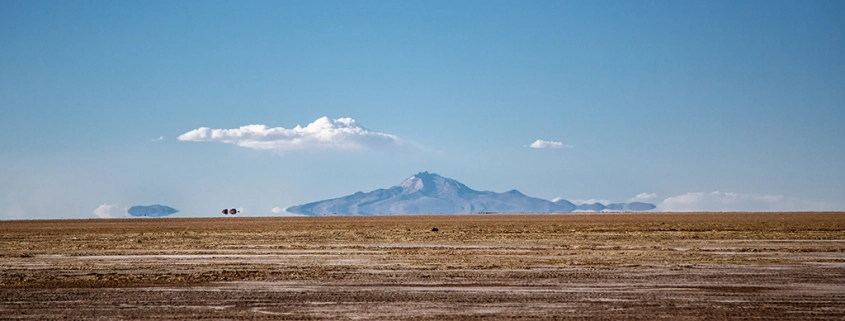What is Mirage in Desert (Meaning, Types, Info)
The desert is an incredible and captivating location with many wonders that capture the imagination. There are many wonders and amazements found in the desert, and each one is unique. The mirage is among the most fascinating desert phenomena.
When light is bent or refracted as it travels through layers of air with varying temperatures, there might be water, an item, or even a complete landscape when none exists. This phenomenon is known as a mirage. In this article, we will know what is a mirage and why it happens.
What is a Mirage?
An optical illusion known as a mirage is created when light is bent or refracted as it travels across layers of heated air. Because of this bending of light, seemingly nonexistent objects, landscapes, or bodies of water can be seen. Though they can happen in other settings as well, mirages are most frequently seen in deserts or other hot, dry places.
The most common kind of mirage is called a “water mirage,” where a shimmering pool of water appears on the horizon, giving the impression that there is water nearby. Intriguing as well as misleading, mirages can fool tourists into believing they are viewing far-off objects or bodies of water because they can seem so authentic.
Our knowledge of light behavior and the intricate interactions between atmospheric conditions has improved as a result of research on mirages.
Mirage in the Desert Meaning
The phrase “mirage in the desert” refers to the phenomena of mirages that occur in arid and desert areas. The sight of a mirage can generate feelings of hope and relief since the illusion of water offers the potential for nutrition and relief from the arid surroundings.
A mirage is frequently used in literature as a metaphor to communicate deeper ideas and topics. It reflects an illusory or deceptive impression, a mistaken belief or hope, or the elusive quality of desire. It represents the idea that things are not always as they appear and that our perceptions might be twisted or misdirected.
In literature, a mirage can be used to explore topics such as following unreachable aspirations, the futility of chasing illusions, or the perils of being misled by appearances. It can function as a cautionary symbol, warning against the tempting pull of false promises or human mind deceptions.
Mirage in the Desert Explained
Mirages emerge in the desert because of atmospheric refraction, which occurs when light bends as it passes through different temperature air layers.

The heated surface of the desert heats the air near the ground, resulting in a temperature gradient. This causes light from distant objects to refract, resulting in mirages.
When heated air near the ground causes objects to look taller or float above their true position, this is referred to as a superior mirage. When cooler air near the ground causes objects to appear lower than they are, an inferior mirage occurs.
The illusion of water in the desert is called a Mirage, or the illusion of floating objects in the desert is created by these optical illusions. Mirages require a strong temperature differential, good visibility, and calm weather.
Types of Mirages
Mirages come in a variety of shapes and sizes, and each one is a one-of-a-kind natural wonder.
Superior mirages, in which objects appear elevated or inverted due to temperature inversions; inferior mirages, in which objects appear floating above the true horizon, Fata Morgana mirages, complex and distorted mirages caused by multiple layers of temperature gradients.
There are haze mirages, in which images shimmer and blur due to warm air above cooler surfaces; and mock mirages, in which objects appear higher than they are.
Mirages are common in arid or hot areas, with the water mirage being the most well-known example, where the illusion of water appears on the horizon.
Why Mirage in Desert Illusion Happen?
The temperature gradient near the ground is the fundamental cause of the Mirage in the desert illusion. The sun heats the sand and the air close above it during the day, creating a layer of hot air near the surface.
The temperature of the air gradually declines as you go higher above the ground. When light passes through differing temperature air layers, its speed and direction change, resulting in refraction.
In the case of a desert mirage, the temperature differential causes light rays to bend as they pass through varying densities of air layers.
How Many Mirages One Can See?
The number of mirages that can be seen is determined by a variety of factors, including the observer’s location and the precise environmental circumstances. Multiple mirages are achievable in a desert setting with adequate conditions.
Mirage visibility can also be affected by the time of day. Mirages are most common during the hottest sections of the day when the temperature gradient near the ground is the greatest. Mirages become more likely to appear as the temperature rises.
Real Mirage in Desert Facts
Optical Illusion: Mirages are optical illusions that create the appearance of water or objects where they do not exist.
Types of Mirages: The two main types of mirages observed in deserts are inferior mirages and superior mirages. Inferior mirages are more common.
Shimmering Effect: Mirages often produce a shimmering or wavy effect, commonly referred to as “heat haze” or “desert shimmer.”

Distorted Objects: Mirages can cause distant objects, such as dunes or mountains, to appear distorted, elongated, or elevated.
Illusion of Water: One of the most well-known aspects of desert mirages is the illusion of water, often referred to as “mirage lakes.”
Temporal Nature: Mirages are transient, appearing and disappearing quickly. They are quite sensitive to the precise atmospheric conditions.
Artistic and Cultural Depictions: Mirages in the desert have always fascinated artists, and they have frequently been depicted in literature, paintings, and other forms of art.
Scientific Study: Mirages have been extensively investigated by scientists and researchers to better understand the physics of light and air refraction.
Mirages and the Human Mind
The link between the human mind and desert mirages is found in our observation and interpretation of optical illusions. Our minds process the visual cues offered by mirages, and our prior experiences and expectations influence how we interpret them.
Cognitive biases and cultural influences both influence our interpretation. Aesthetic and emotional reactions to the surreal quality of mirages can also influence our thinking.
Final Words
In summary, the desert offers a variety of mesmerizing wonders that are equally varied. The desert presents a tapestry of wonders, from the captivating mirages that deceive our eyes into thinking they are seeing water or other landscapes to the charming oasis that offers a haven of life in the middle of the desert.
The mysticism and fascination of the desert are enhanced by these natural phenomena as well as by the towering dunes, magnificent rock formations, breathtaking canyons, and the quiet majesty of the night sky.
Are you planning to travel to Iran and looking for an Iran resort? Consider Matinabad Eco-resort.





Leave a Reply
Want to join the discussion?Feel free to contribute!